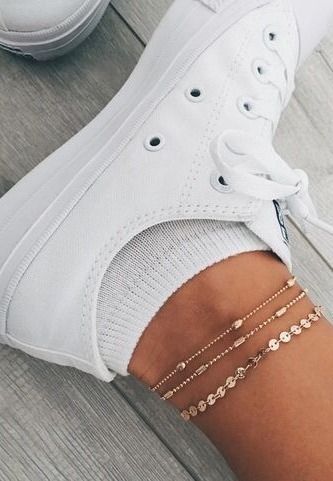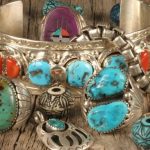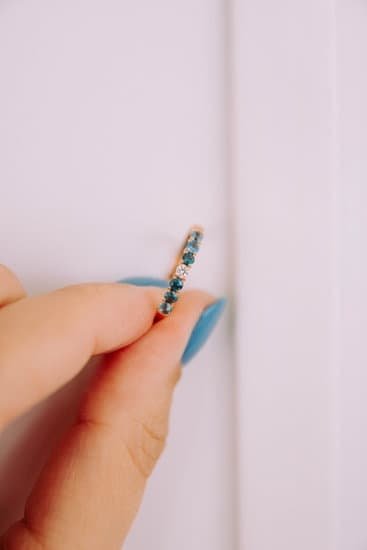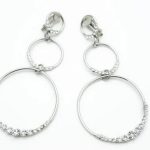Are you trying to figure out how to choose beads colors for jewelry making? The color of the beads you select plays a crucial role in determining the overall look and feel of your jewelry pieces. In this article, we will explore the significance of bead colors in jewelry making and provide practical tips for selecting the right colors to enhance your designs.
Understanding the basics of color theory is essential when it comes to choosing bead colors for jewelry making. By learning about color mixing and matching, you can create harmonious and visually appealing combinations that elevate the beauty of your jewelry pieces. We will delve into the fundamentals of color theory and how it applies to bead selection, providing you with a solid foundation for your creative endeavors.
In addition to understanding color theory, selecting bead colors based on your jewelry’s theme or design is crucial for achieving cohesiveness and aesthetic appeal. Whether you’re aiming for a specific mood or style, considering the meaning and symbolism of different colors can guide your choices and add depth to your creations. Stay tuned as we dive into practical strategies for choosing complementary and contrasting colors to make your jewelry designs stand out.
Understanding Color Theory
Primary, Secondary, and Tertiary Colors
In order to effectively choose bead colors for jewelry making, it is essential to have a basic understanding of color theory. Primary colors, which include red, blue, and yellow, are the foundation of all other colors. Secondary colors are created by mixing two primary colors together, resulting in orange, green, and purple.
Tertiary colors are made by combining a primary color with a secondary color. Understanding this color wheel can help jewelry makers identify which colors will work well together in their designs.
Color Temperature and Intensity
Another important aspect of color theory to consider when choosing bead colors for jewelry making is the concept of temperature and intensity. Warm colors such as reds, oranges, and yellows create a vibrant and energetic feel in jewelry pieces. On the other hand, cool colors like blues, greens, and purples evoke a sense of calmness and tranquility. Additionally, understanding the intensity or brightness of different colors can help in creating balanced and visually appealing jewelry designs.
Harmonious Color Schemes
When selecting bead colors for jewelry making, it can be helpful to use harmonious color schemes based on color theory. Complementary colors are located opposite each other on the color wheel (such as red and green), while analogous colors are adjacent to each other (like blue, blue-green, and green).
Triadic color schemes involve choosing three evenly spaced hues on the color wheel (for example: orange, green, and purple). By utilizing these harmonious color schemes based on color theory, jewelry makers can create visually striking pieces that appeal to a wide range of tastes.
Selecting Colors Based on the Jewelry’s Theme or Design
When it comes to choosing bead colors for jewelry making, one of the most important factors to consider is the theme or design of the jewelry piece. The colors you choose can greatly impact the overall look and feel of the final product. Here are some tips on how to select bead colors based on your jewelry’s theme or design:
Nature-Inspired Jewelry
If your jewelry piece is inspired by nature, such as a floral or leafy design, consider using earthy tones like greens, browns, and yellows. You can also incorporate pops of color like vibrant blues and oranges to mimic the diversity of nature.
Bohemian or Ethnic Jewelry
For bohemian or ethnic-inspired jewelry, embrace a mix of rich and bold colors such as deep reds, purples, and turquoises. Consider using beads with intricate patterns and designs that draw inspiration from various cultures around the world.
Minimalist or Modern Jewelry
If your jewelry design is minimalistic or modern, opt for a monochromatic color scheme using shades of black, white, and gray. You can also experiment with metallic beads like gold or silver for a sleek and contemporary look.
Remember that the colors you choose should not only complement your jewelry’s theme but also reflect your personal style and creativity. By understanding the theme or design of your jewelry piece, you can effectively narrow down your choices and create a cohesive color palette that enhances its overall aesthetic appeal.
Considering the Meaning and Symbolism of Different Colors
When it comes to choosing bead colors for jewelry making, it’s important to consider the meanings and symbolism behind different colors. Each color holds a unique significance and can evoke certain emotions or convey specific messages. Understanding the symbolic meaning of different colors can help you create jewelry pieces that resonate with the wearer on a deeper level.
Understanding Color Symbolism
In color psychology, red is often associated with passion, energy, and power, while orange represents creativity, warmth, and enthusiasm. Yellow is linked to happiness, positivity, and enlightenment, while green symbolizes growth, harmony, and nature. Blue is often associated with tranquility, trust, and stability, while purple represents luxury, wisdom, and spirituality. Understanding these symbolic meanings can guide you in choosing bead colors that align with the intended message or theme of your jewelry piece.
Creating Symbolic Jewelry
You can use the symbolic meanings of colors to create jewelry pieces that hold personal or cultural significance. For example, if you’re creating a piece to represent love and romance, using red beads can convey passion and desire. If you’re designing a piece inspired by nature and growth, incorporating green beads can symbolize harmony and renewal. By incorporating color symbolism into your jewelry making process, you can infuse deeper meaning into your creations.
Personal Expression Through Color
It’s also important to consider the personal associations individuals may have with certain colors. A particular color may hold sentimental value or evoke specific memories for someone. When creating custom jewelry pieces for clients or loved ones, take into account their personal connection to different colors when selecting beads. This attention to individual symbolism will make the jewelry even more meaningful for the wearer.
By considering the meaning and symbolism of different colors in your bead selection process for jewelry making, you can create pieces that not only look beautiful but also carry deeper significance. Whether you’re creating pieces for yourself or others, understanding color symbolism adds an extra layer of thoughtfulness to your creations.
Tips for Choosing Complementary and Contrasting Colors
When it comes to jewelry making, the selection of bead colors is a crucial aspect that can either make or break the final piece. Understanding how to choose complementary and contrasting colors can greatly enhance the visual impact of your jewelry. Here are some tips for selecting bead colors that complement and contrast effectively:
- Start by understanding the color wheel: Familiarize yourself with the basics of the color wheel to identify complementary and contrasting colors. Complementary colors are opposite each other on the wheel, while contrasting colors are those that are adjacent to each other.
- Experiment with analogous color schemes: Analogous colors are those that are next to each other on the color wheel, such as blue, green, and teal. Using analogous colors in your jewelry can create a harmonious and soothing effect.
- Consider using a neutral base: Neutral colors like black, white, gray, and brown can serve as an excellent base for incorporating pops of complementary or contrasting colors in your jewelry design.
As you become more familiar with color theory and its application in jewelry making, you will gain a better understanding of how to choose beads colors for jewelry making that complement or contrast with each other effectively.
In addition to considering complementary and contrasting colors, it’s important to take into account the overall theme or design of your jewelry piece. Whether you’re aiming for a bold statement piece or a delicate accessory, choosing bead colors that align with the intended aesthetic is essential for achieving a cohesive look. By carefully selecting complementary and contrasting bead colors based on these considerations, you can create stunning pieces of jewelry that truly stand out.
Exploring the Effect of Bead Colors on Skin Tones
The effect of bead colors on skin tones is an important consideration when making jewelry. Choosing the right colors can enhance the beauty of the wearer, while the wrong colors can clash and detract from their appearance. Understanding how different bead colors interact with various skin tones is crucial for creating jewelry that complements and enhances the wearer’s natural features.
When choosing bead colors for jewelry making, it is essential to consider the undertones of the wearer’s skin. Warm undertones tend to look best with earthy and warm tones such as gold, copper, orange, and red. On the other hand, cool undertones pair well with silver, blues, purples, and greens. By understanding these simple guidelines, you can ensure that your jewelry will flatter a wide range of skin tones.
In addition to undertones, it is also important to consider contrast when choosing bead colors for jewelry making. For example, individuals with darker skin tones may find that bright or light-colored beads provide a striking contrast and make a bold statement.
Meanwhile, individuals with lighter skin tones may find that darker or muted colors create a more subtle and elegant look. By considering these factors, you can create jewelry that not only looks beautiful but also complements the unique qualities of each individual’s skin tone.
By understanding how to choose bead colors for jewelry making based on different skin tones, you can ensure that your creations will be as flattering as they are beautiful. Whether you are making jewelry for yourself or others, taking into account the effect of bead colors on skin tones will allow you to create pieces that are truly stunning and bring out the best in anyone who wears them.
Using Bead Colors to Create Emotion or Mood in Jewelry
When it comes to making jewelry, the color of the beads you choose can have a significant impact on the overall emotion or mood of the piece. The right combination of colors can evoke feelings of joy, tranquility, and elegance, while the wrong combination can create a sense of unease or chaos. So, how to choose bead colors for jewelry making that will effectively convey the desired emotional effect? Here are some tips to consider.
First, consider the psychological impact of different colors. For example, red is often associated with passion and energy, while blue is known for its calming and soothing effects. By understanding the meanings and symbolism behind various colors, you can intentionally select beads that align with the emotional response you want your jewelry to elicit.
Next, think about color combinations. Complementary colors (opposites on the color wheel) create a vibrant and striking look, while analogous colors (those next to each other on the color wheel) offer a more harmonious and cohesive appearance. Experimenting with these different combinations can help you achieve specific emotional effects in your jewelry pieces.
Lastly, remember to take into account skin tones. Certain bead colors may pop against one person’s skin tone but blend in with another’s. Understanding how bead colors interact with different skin tones can help you create jewelry that complements a wide range of individuals.
By using bead colors strategically in your jewelry making, you can effectively convey specific emotions or moods through your creations. Whether you’re aiming for a sense of serenity or a burst of energy, thoughtful consideration of bead colors is key in achieving your desired outcome.
| Color | Emotional Effect |
|---|---|
| Red | Passion and Energy |
| Blue | Calming and Soothing |
| Yellow | Cheerfulness and Optimism |
Practical Tips for Experimenting With Bead Colors in Jewelry Making
When it comes to jewelry making, the color of the beads you choose can greatly impact the overall look and feel of the piece. While understanding color theory is important, there are also practical tips that can help you experiment with bead colors effectively.
One tip is to start by considering the primary color of your outfit or the outfit your jewelry will be paired with. For example, if you often wear blue clothing, incorporating different shades of blue or complementary colors like silver or white can create a cohesive look. Understanding color psychology and how different colors evoke certain emotions can also help guide your bead color selection.
Another practical tip is to consider the occasion or purpose of the jewelry piece. For example, if you are making a necklace for a formal event, choosing elegant and timeless colors like black, gold, or deep red may be more appropriate. On the other hand, if you are creating a fun and playful bracelet for everyday wear, experimenting with bright and vibrant bead colors can add a pop of excitement to your ensemble.
Lastly, don’t be afraid to experiment and mix different bead colors together. Sometimes unexpected color combinations can result in unique and eye-catching jewelry pieces. Using color wheels as a reference can also help guide you in selecting complementary or contrasting colors that work well together. Ultimately, embracing creativity and individuality in bead color selection is key in creating stunning and personalized jewelry pieces.
| Practical Tip | Description |
|---|---|
| Consider Outfit Color | Match bead colors with primary outfit hues for a cohesive look |
| Think About Occasion | Choose bead colors based on formal or casual event to suit the purpose of the jewelry piece |
| Experiment with Mixing Colors | Don’t hesitate to try out unexpected color combinations using reference tools like color wheels |
Conclusion
In conclusion, the process of choosing bead colors for jewelry making is an essential aspect of the creative and artistic journey. It involves a deep understanding of color theory, as well as consideration for the theme, symbolism, and emotional impact of different colors. By embracing creativity and individuality in bead color selection, jewelry makers can truly elevate their craft to new heights.
When it comes to how to choose bead colors for jewelry making, one must remember that there are no strict rules or limitations. Instead, it is about allowing oneself to experiment with different color combinations and trusting one’s instinct and personal preferences. By doing so, artisans can create unique pieces that reflect their own style and personality.
Moreover, it is important for jewelry makers to understand that bead colors have the power to evoke emotions and enhance the overall mood of a piece. Whether aiming for a bold statement or a subtle elegance, incorporating carefully chosen bead colors can make all the difference in creating a stunning piece of jewelry. Ultimately, by embracing creativity and individuality in bead color selection, artisans can truly make their mark in the world of jewelry making.
Frequently Asked Questions
How Do I Choose a Beading Color?
When choosing a beading color, consider the overall design aesthetic and the color palette you want to achieve. Think about the mood and tone of your piece, and whether you want the beads to stand out or blend in.
What Color Beads Look Good Together?
Good color combinations for beads depend on complementary or analogous colors. Complementary colors, like blue and orange, create contrast, while analogous colors, such as red and orange, create a harmonious look. Experiment with different combinations to find what looks best together.
What Do the Colors of Beads Mean?
The colors of beads can convey different meanings and emotions. For example, red can symbolize passion or love, while blue is often associated with tranquility or calmness. Consider the cultural or symbolic significance of colors and how they might enhance the meaning of your beaded jewelry piece.

Welcome to my jewelry blog! My name is Sarah and I am the owner of this blog.
I love making jewelry and sharing my creations with others.
So whether you’re someone who loves wearing jewelry yourself or simply enjoys learning about it, be sure to check out my blog for insightful posts on everything related to this exciting topic!





